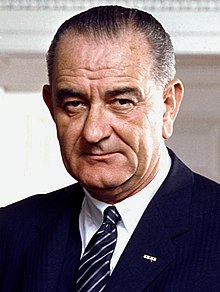User:NewDealChief/sandbox
| |||||||||||||||||||||||||||||||||||||||||||||||||||||||||||||||||||||||
All 808 seats in the United States Parliament 405 seats needed for a majority | |||||||||||||||||||||||||||||||||||||||||||||||||||||||||||||||||||||||
|---|---|---|---|---|---|---|---|---|---|---|---|---|---|---|---|---|---|---|---|---|---|---|---|---|---|---|---|---|---|---|---|---|---|---|---|---|---|---|---|---|---|---|---|---|---|---|---|---|---|---|---|---|---|---|---|---|---|---|---|---|---|---|---|---|---|---|---|---|---|---|---|
| Registered | 168,804,741 | ||||||||||||||||||||||||||||||||||||||||||||||||||||||||||||||||||||||
| Turnout | 106,009,377 (62.8%) | ||||||||||||||||||||||||||||||||||||||||||||||||||||||||||||||||||||||
| |||||||||||||||||||||||||||||||||||||||||||||||||||||||||||||||||||||||
 Results: Farmer–Labor hold Farmer–Labor gain Conservative hold Conservative gain Jacksonian hold Jacksonian gain NAACP hold NAACP gain | |||||||||||||||||||||||||||||||||||||||||||||||||||||||||||||||||||||||
| |||||||||||||||||||||||||||||||||||||||||||||||||||||||||||||||||||||||
| |||||||||||||||||||||||||||||||||
All registered voters in the United States An absolute majority of votes needed to win | |||||||||||||||||||||||||||||||||
|---|---|---|---|---|---|---|---|---|---|---|---|---|---|---|---|---|---|---|---|---|---|---|---|---|---|---|---|---|---|---|---|---|---|
| Registered | 168,804,741 | ||||||||||||||||||||||||||||||||
| Turnout | 106,009,377 (62.8%) | ||||||||||||||||||||||||||||||||
| |||||||||||||||||||||||||||||||||
 | |||||||||||||||||||||||||||||||||
| |||||||||||||||||||||||||||||||||
William Jennings Bryan | |
|---|---|
 Bryan, c. 1924 | |
| Chancellor of the United States | |
| In office January 5, 1915 – January 2, 1923 | |
| President | Theodore Van Roosevelt |
| Deputy Chancellor | Victor L. Berger |
| Preceded by | Henry Cabot Lodge |
| Succeeded by | Nicholas Murray Butler |
| In office January 1, 1907 – January 3, 1911 | |
| President | Charles A. Towne |
| Deputy Chancellor | Robert M. La Follette |
| Preceded by | Joseph Gurney Cannon |
| Succeeded by | Henry Cabot Lodge |
| In office October 29, 1897 – January 6, 1903 | |
| President | James B. Weaver |
| Deputy Chancellor | Eugene V. Debs |
| Preceded by | Henry George |
| Succeeded by | Joseph Gurney Cannon |
| Leader of the Opposition | |
| In office January 3, 1911 – January 5, 1915 | |
| President | Robert Borden |
| Chancellor | Henry Cabot Lodge |
| Preceded by | Henry Cabot Lodge |
| Succeeded by | Henry Cabot Lodge |
| In office January 6, 1903 – January 1, 1907 | |
| President | Elihu Root |
| Chancellor | Joseph Gurney Cannon |
| Preceded by | Joseph Gurney Cannon |
| Succeeded by | Joseph Gurney Cannon |
| Deputy Chancellor of the United States | |
| In office July 1, 1897 – October 29, 1897 | |
| Chancellor | Henry George |
| Preceded by | James H. Kyle |
| Succeeded by | Eugene V. Debs |
| Leader of the Farmer–Labor Party in the United States Parliament | |
| In office October 29, 1897 – January 2, 1923 | |
| Deputy Leader | Eugene V. Debs (1897 – 1903) Charles A. Towne (1903 – 1907) Robert M. La Follette (1907 – 1915) Victor L. Berger (1915 – 1923) |
| Preceded by | Henry George |
| Succeeded by | Victor L. Berger |
| Deputy Leader of the Farmer–Labor Party in the United States Parliament | |
| In office July 1, 1897 – October 29, 1897 | |
| Leader | Henry George |
| Preceded by | James H. Kyle |
| Succeeded by | Eugene V. Debs |
| Member of the United States Parliament for Nebraska's 1st District | |
| In office January 6, 1891 – January 2, 1923 | |
| Preceded by | John A. McShane |
| Succeeded by | George L. Sheldon |
| Constituency | District of Lincoln |
| Personal details | |
| Born | March 19, 1860 Salem, Illinois, U.S. |
| Died | July 26, 1933 (aged 73) Miami, Florida, U.S. |
| Resting place | Fort McPherson National Cemetery, Nebraska |
| Political party | Farmer–Labor |
| Spouse | |
| Children | 3, including Ruth |
| Parent |
|
| Relatives |
|
| Education | |
| Signature | |
| |||||||||||||||||||||||||||||||||||||||||
531 members of the Electoral College 266 electoral votes needed to win | |||||||||||||||||||||||||||||||||||||||||
|---|---|---|---|---|---|---|---|---|---|---|---|---|---|---|---|---|---|---|---|---|---|---|---|---|---|---|---|---|---|---|---|---|---|---|---|---|---|---|---|---|---|
| Turnout | 48.9% | ||||||||||||||||||||||||||||||||||||||||
| |||||||||||||||||||||||||||||||||||||||||
 | |||||||||||||||||||||||||||||||||||||||||
| |||||||||||||||||||||||||||||||||||||||||
1925 Contingent United States Presidential Election | |||||||||||||||||||||||||||||||||||||||||
| |||||||||||||||||||||||||||||||||||||||||
48 State Delegations of the United States House of Representatives 25 State votes needed to win | |||||||||||||||||||||||||||||||||||||||||
| |||||||||||||||||||||||||||||||||||||||||
 House of Representatives vote by each State. States in Light Blue voted for Harding, States in Gold voted for Davis, and States in Light Green voted for La Follette. | |||||||||||||||||||||||||||||||||||||||||
1925 Contingent United States Vice Presidential Election | |||||||||||||||||||||||||||||||||||||||||
| |||||||||||||||||||||||||||||||||||||||||
96 members of the United States Senate 49 votes needed to win | |||||||||||||||||||||||||||||||||||||||||
| |||||||||||||||||||||||||||||||||||||||||
 | |||||||||||||||||||||||||||||||||||||||||


